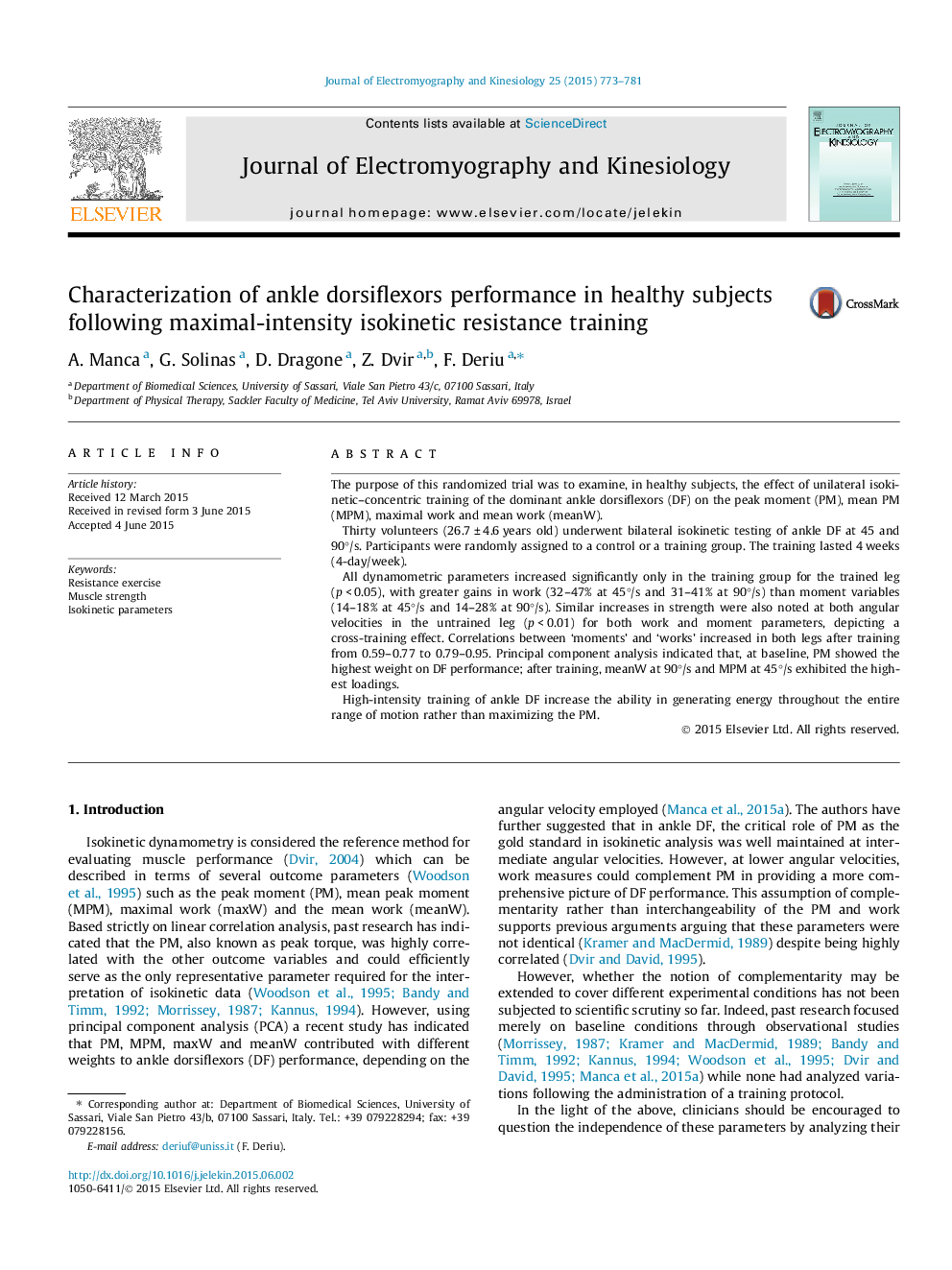| Article ID | Journal | Published Year | Pages | File Type |
|---|---|---|---|---|
| 6210326 | Journal of Electromyography and Kinesiology | 2015 | 9 Pages |
The purpose of this randomized trial was to examine, in healthy subjects, the effect of unilateral isokinetic-concentric training of the dominant ankle dorsiflexors (DF) on the peak moment (PM), mean PM (MPM), maximal work and mean work (meanW).Thirty volunteers (26.7 ± 4.6 years old) underwent bilateral isokinetic testing of ankle DF at 45 and 90°/s. Participants were randomly assigned to a control or a training group. The training lasted 4 weeks (4-day/week).All dynamometric parameters increased significantly only in the training group for the trained leg (p < 0.05), with greater gains in work (32-47% at 45°/s and 31-41% at 90°/s) than moment variables (14-18% at 45°/s and 14-28% at 90°/s). Similar increases in strength were also noted at both angular velocities in the untrained leg (p < 0.01) for both work and moment parameters, depicting a cross-training effect. Correlations between 'moments' and 'works' increased in both legs after training from 0.59-0.77 to 0.79-0.95. Principal component analysis indicated that, at baseline, PM showed the highest weight on DF performance; after training, meanW at 90°/s and MPM at 45°/s exhibited the highest loadings.High-intensity training of ankle DF increase the ability in generating energy throughout the entire range of motion rather than maximizing the PM.
